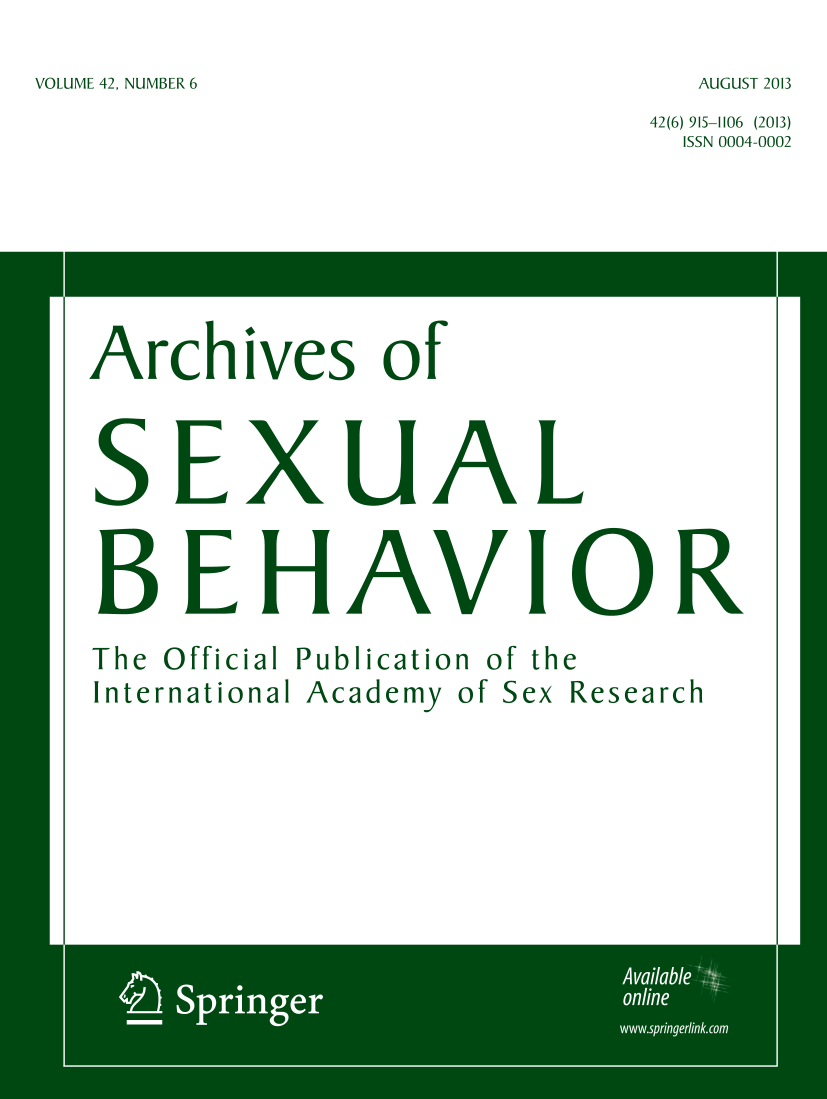Another pillar of the Blackpill train of ideas is the concept of women being attracted to violent men. I don't doubt that a small portion of hypometabolic, dysfunctional women are 'attracted' to such behavior, but this overall idea is another flimsy bias in this ideology.
If we look at samples who behave in the manner that's being described by the Blackpill, we can see the same pattern of overall dysfunction.

 link.springer.com
link.springer.com
Using data from an undergraduate probability sample, we aimed to: (1) describe the prevalence and demographic characteristics of students who reported having engaged in rough sex with their current partner; (2) assess which sexual behaviors students consider to be rough sex; (3) describe the frequency with which participants report engaging in rough sex as well as their reports of initiating and liking rough sex, in relation to gender and sexual identity; and (4) examine predictors of rough sex frequency. Participants were 4998 students randomly sampled from a large Midwestern university who completed a confidential Internet-based survey (2453 women, 2445 men, 41 gender non-binary, 36 transgender or other gender non-conforming identities). Within these, 1795 individuals who reported a romantic/sexual partner of at least 3 months responded to questions about engaging, liking, and initiating rough sex. The most common behaviors participants considered to be rough sex were choking, hair pulling, and spanking. Transgender and gender non-binary students more often endorsed behaviors as rough sex. Also, rough sex was conceptualized as multidimensional, with one cluster being more consistent with earlier conceptualizations of rough sex (e.g., hair pulling, spanking) and the second cluster including behaviors such as choking, slapping, punching, and making someone have sex. About 80% of those with a current sexual or romantic partner engaged in rough sex with them and most who engaged it liked it. Bisexual women reported greater rough sex frequency and enjoyment (54.1% indicated enjoying it “very much”). Implications for sexuality research and education are discussed.
The 3 groups in this study that preferred a violent sort of sex were dysfunctional/ill groups.

 pubmed.ncbi.nlm.nih.gov
pubmed.ncbi.nlm.nih.gov

 pubmed.ncbi.nlm.nih.gov
pubmed.ncbi.nlm.nih.gov

 pubmed.ncbi.nlm.nih.gov
pubmed.ncbi.nlm.nih.gov

 pubmed.ncbi.nlm.nih.gov
pubmed.ncbi.nlm.nih.gov
The aims of this article are to analyze exposure to pornography, its content, and the associations between victimization and pornography in a sample of 303 students (49.2% female). The questionnaire included questions on pornography exposure, psychological and physical family violence, and sexual violence. Almost all male students and 67% of female students had ever watched pornography; 42% and 32%, respectively, had watched violence against women. Female students exposed to family psychological violence and to sexual violence were significantly more likely to watch pornography, especially violent pornography than those who had not been exposed. No such association was found among male students.
Yet again, unsurprisingly, another sample bias is present here as well.
And for the last study, I share again, people with psychopathy and disorders alike usually match themselves together.

 bioprovement.com
bioprovement.com
I conclude these study reviews by stating that another hole in the fatalistic ideology has been identified.
If we look at samples who behave in the manner that's being described by the Blackpill, we can see the same pattern of overall dysfunction.

What Is Rough Sex, Who Does It, and Who Likes It? Findings from a Probability Sample of U.S. Undergraduate Students - Archives of Sexual Behavior
Using data from an undergraduate probability sample, we aimed to: (1) describe the prevalence and demographic characteristics of students who reported having engaged in rough sex with their current partner; (2) assess which sexual behaviors students consider to be rough sex; (3) describe the...
Using data from an undergraduate probability sample, we aimed to: (1) describe the prevalence and demographic characteristics of students who reported having engaged in rough sex with their current partner; (2) assess which sexual behaviors students consider to be rough sex; (3) describe the frequency with which participants report engaging in rough sex as well as their reports of initiating and liking rough sex, in relation to gender and sexual identity; and (4) examine predictors of rough sex frequency. Participants were 4998 students randomly sampled from a large Midwestern university who completed a confidential Internet-based survey (2453 women, 2445 men, 41 gender non-binary, 36 transgender or other gender non-conforming identities). Within these, 1795 individuals who reported a romantic/sexual partner of at least 3 months responded to questions about engaging, liking, and initiating rough sex. The most common behaviors participants considered to be rough sex were choking, hair pulling, and spanking. Transgender and gender non-binary students more often endorsed behaviors as rough sex. Also, rough sex was conceptualized as multidimensional, with one cluster being more consistent with earlier conceptualizations of rough sex (e.g., hair pulling, spanking) and the second cluster including behaviors such as choking, slapping, punching, and making someone have sex. About 80% of those with a current sexual or romantic partner engaged in rough sex with them and most who engaged it liked it. Bisexual women reported greater rough sex frequency and enjoyment (54.1% indicated enjoying it “very much”). Implications for sexuality research and education are discussed.
The 3 groups in this study that preferred a violent sort of sex were dysfunctional/ill groups.

Psychiatric disorders in the U.S. transgender population - PubMed
Our findings suggest a high prevalence and significantly higher odds of mental disorder diagnoses in the transgender population as compared with the cisgender population using data that are nationally representative of the U.S.

Bisexuality, poverty and mental health: A mixed methods analysis - PubMed
Bisexuality is consistently associated with poor mental health outcomes. In population-based data, this is partially explained by income differences between bisexual people and lesbian, gay, and/or heterosexual individuals. However, the interrelationships between bisexuality, poverty, and mental...

Bisexual individuals are at greater risk of poor mental health than lesbians and gay men: The mediating role of sexual identity stress at multiple levels - PubMed
Given the greater vulnerability of bisexual individuals to common mental health problems, evidence-based psychological interventions that strategically target their identity stress at multiple levels should be developed and made available to those in need. Social and psychoeducational...

Prevalence of mental disorders, psychological distress, and mental health services use among lesbian, gay, and bisexual adults in the United States - PubMed
Recent estimates of mental health morbidity among adults reporting same-gender sexual partners suggest that lesbians, gay men, and bisexual individuals may experience excess risk for some mental disorders as compared with heterosexual individuals. However, sexual orientation has not been...
The aims of this article are to analyze exposure to pornography, its content, and the associations between victimization and pornography in a sample of 303 students (49.2% female). The questionnaire included questions on pornography exposure, psychological and physical family violence, and sexual violence. Almost all male students and 67% of female students had ever watched pornography; 42% and 32%, respectively, had watched violence against women. Female students exposed to family psychological violence and to sexual violence were significantly more likely to watch pornography, especially violent pornography than those who had not been exposed. No such association was found among male students.
Yet again, unsurprisingly, another sample bias is present here as well.
And for the last study, I share again, people with psychopathy and disorders alike usually match themselves together.

Hypometabolic - Do psychopathic birds of a feather flock together? Psychopathic personality traits and romantic preferences
https://pubmed.ncbi.nlm.nih.gov/29663404/ Results: Across both studies, absolute romantic preferences for psychopathic traits collapsed across time point were low on average, but higher than those for most all other PDs. In addition, they were higher for Factor 1 (i.e., interpersonal/affective)...
I conclude these study reviews by stating that another hole in the fatalistic ideology has been identified.
